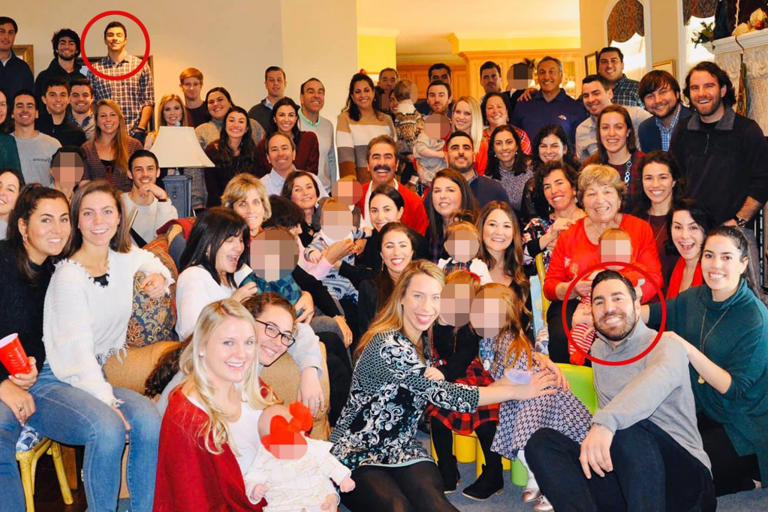The Luigi Mangione Family: Italian roots, migration paths, and a complete genealogy guide

If you’re searching for information about the “Luigi Mangione family,” you might be mapping your own ancestry, writing a profile for a community project, or building a family website. This guide brings together the story behind the Mangione surname, the cultural significance of the given name Luigi, and a practical research plan you can use to document a verified family history. To protect privacy and accuracy, this article does not assert facts about any specific living individual named Luigi Mangione; instead, it gives you the tools to build your own sourced, SEO-friendly page.
What the Mangione surname means
Italian surnames often trace back to nicknames, occupations, or personal traits. Mangione likely stems from the verb “mangiare” (to eat) and the noun “mangione,” which in various dialects can mean “hearty eater” or someone associated with food and hospitality. Like many nickname-based surnames, it probably began as a descriptor in a close-knit community and then became hereditary.
Where the name is most common
- Southern Italy: The surname appears with notable frequency in Sicily and Calabria, though it exists across Italy.
- Italian diaspora: From the late 1800s into the mid-1900s, Italian families moved to North and South America, and to Australia. Today, Mangione households are found in the United States (especially the Northeast and Great Lakes), Canada (Ontario and Quebec), Argentina and Brazil, and Australian cities with Italian communities.
- Urban clusters abroad: In the U.S., look to New York/New Jersey, Buffalo/Rochester, Chicago, and parts of Pennsylvania; in Canada, Toronto and Montreal are common hubs.
The given name Luigi and Italian naming customs

Luigi is the Italian counterpart to Louis, ultimately derived from a Germanic root meaning “famous warrior.” Historically, Italian parents often honored grandparents, saints, or local patrons when naming children. That means in a Mangione tree, you might find several men named Luigi over successive generations. To tell individuals apart, pay attention to:
- Middle names and baptismal names
- Nicknames (Gigi, Gigino)
- Spousal names, witnesses, and godparents in records
- Birth years, parishes, and house addresses
Why “the Luigi Mangione family” can mean different things
- Immediate family: Luigi, spouse, and children
- A lineage: A branch in which a particular Luigi is an ancestor or a central figure
- A public household: A family recognizable in a town’s civic life, business scene, or church community
Clarify from the outset which Luigi your profile concerns by anchoring the story with dates and locations.
A step-by-step plan to research a specific Luigi Mangione family
Write down what you already know
- Collect full names, approximate dates, and places of birth, marriage, and death.
- Note addresses, parishes, and towns—especially Italian comunes or frazioni.
- Gather documents on hand: certificates, immigration papers, passports, obituaries, letters, photos, and funeral cards.
Interview relatives
- Ask for the Italian hometown (comune and province), not just “Sicily” or “the south.”
- Capture stories about trades, military service, church life, and migration routes.
- Record alternate spellings and nicknames; note language shifts (Luigi → Louis).
Hunt for civil and parish records in Italy
- Stato Civile (Civil Registration): Birth (Nati), marriage (Matrimoni), and death (Morti) records typically exist from the early 1800s onward.
- Parish books: Baptism, marriage, and burial entries can reach back further than civil files. Diocesan archives or the local parish office may help.
- Name variants: Watch for Mangione rendered as Mangioni, Manjone, or mangled in transcription. Compare parents’ names and ages to confirm identity.
Track immigration and naturalization
- Passenger manifests: U.S. Ellis Island and Castle Garden records, Canadian port lists, and Latin American immigration registers can tie Luigi to a specific ship and traveling companions.
- Naturalization and alien registration: These files often list birthplaces, exact birthdates, spouses, and addresses.
Explore census, directories, and vital records abroad
- Censuses: Household snapshots reveal neighbors (often relatives) and occupations.
- City directories: Show addresses, businesses, and employment across years.
- Birth, marriage, and death records: Provide maiden names, parents’ names, and burial locations.
Build a sourced tree on major platforms
- FamilySearch (free), Ancestry, MyHeritage: Attach images of records, not just indexes.
- Avoid copying unsourced trees; treat them as leads only.
Consider DNA as a supporting tool
Autosomal DNA can help triangulate relationships among Mangione descendants across continents. Combine DNA hints with documentary proof before making claims.
Map the story visually
- Create a migration map from Italian hometown to new city.
- Plot life events on a timeline to spot gaps or contradictions.
Cite everything
- Record archive names, collection titles, volume/page or image numbers, and URLs. Citations build trust and stop future confusion.
Respect privacy
For living family members, get permission before sharing photos, addresses, or sensitive details. Publish responsibly.
Record spotlight by region
Italy
- Civil records: Comune offices and regional archives maintain birth, marriage, and death registers.
- Portale Antenati: Many digitized Italian records are accessible; some require in-person archive visits.
- Parish archives: Contact via diocesan chancery; request extracts if full access isn’t available.
United States
- Federal and state censuses, draft cards (WWI/WWII), Social Security applications
- Naturalization files (petitions, declarations), ship manifests
- Local newspapers for obituaries and community stories
Canada
- Passenger lists, 1901–1921 censuses, Catholic parish registers
- City directories in major urban centers
Argentina and Brazil
- Catholic parish sacramental books
- National immigration records and passenger lists
- Cemetery registers and newspaper notices
Australia
- Assisted immigration lists, naturalization files
- Electoral rolls and local newspapers (Trove)
Common pitfalls when researching a Luigi Mangione
- Confusing two men with the same name living near each other
- Assuming every Mangione in a town is related without proof
- Overlooking female lines; mothers’ surnames unlock entire branches
- Relying solely on transcriptions instead of viewing original images
- Ignoring local dialect spellings and clerical abbreviations
Cultural threads you may encounter in a Mangione family

- Food and hospitality: Sunday gatherings, seasonal preserves, and feast-day menus
- Craft and enterprise: Trades like masonry, tailoring, carpentry, or small shopkeeping
- Faith and community: Parish societies, patron-saint festivals, confraternities
- Language evolution: Italian or Sicilian dialect at home, later generations shifting to local languages with occasional Anglicized names (Luigi → Louis, Giuseppina → Josephine)
Notable surname bearers (no implied relation)
The surname appears in arts and culture, for example jazz musicians Chuck Mangione and Gap Mangione. Their inclusion here is simply to illustrate public visibility of the surname; it does not indicate kinship to any particular Luigi.
SEO blueprint for a page about the Luigi Mangione family
- Use the primary keyword naturally
Include the exact phrase “Luigi Mangione family” in the H1, first paragraph, and meta tags, but avoid keyword stuffing. - Smart headings
Organize with descriptive subheads such as:- Origins of the Mangione surname
- The name Luigi in Italian tradition
- Migration and settlement timeline
- Family records and photo gallery
- Ancestral towns and maps
- Frequently asked questions
- On-page optimization
- Write a 155–160 character meta description that includes “Luigi Mangione family.”
- Add descriptive alt text to images: “Wedding photo, Luigi Mangione and [Spouse], [Year], [Place].”
- Link to reputable sources (archives, museums) and relevant internal pages on your site.
- Include citations or a sources section for credibility.
- Content enhancements
- A timeline graphic summarizing key life events
- A map pinpointing Italian hometown and settlement cities
- Short audio clips of family members pronouncing names or sharing memories
- E-E-A-T signals (Experience, Expertise, Authoritativeness, Trustworthiness)
- A byline with the researcher’s background
- A methodology note describing how records were gathered and verified
- A contact form for corrections or contributions
FAQ about the “Luigi Mangione family”
Is Mangione primarily a Sicilian surname?
It has strong representation in Sicily and Southern Italy, but it’s not exclusive to those regions. Always verify with town-level records.
How do you pronounce Mangione in Italian?
Mahn-JOH-neh, with the stress on the second syllable and a soft “g” as in “John.”
How do I distinguish between two men named Luigi Mangione in the same city?
Use a cluster of identifiers: spouse’s name, children’s names, occupation, street address, and witness names from records. Build timelines for each candidate and compare.
What’s the fastest way to find the Italian hometown?
Naturalization papers and passenger lists often list the exact comune. Obituaries and tombstones can hold clues. Ask older relatives for parish names or patron saints associated with the hometown.
Is there a Mangione coat of arms?
Coats of arms are tied to specific lineages, not entire surnames. Treat mass-market “surname crests” as decorative. If a Mangione branch historically bore arms, that will show in documented heraldic sources.
Which DNA test is most helpful?
Autosomal tests (e.g., at major testing companies) are most useful for 4–5 generations back. For deeper paternal-line clues, Y-DNA tests can help, particularly if mapped against documented Mangione lines.
A customizable biography template you can adapt
Use this as a starting point and replace brackets with verified information and sources.
The story of the Luigi Mangione family begins in [Town/Comune], [Province/Region], where records show the Mangione surname in [earliest known year or range]. Family tradition emphasizes [craft/occupation], faith, and close-knit gatherings that shaped everyday life.
In [year], [Ancestor’s Name] Mangione and [Spouse’s Name] left [Italian port or town] and traveled to [destination city/country]. Passenger lists and [archive/collection] confirm their arrival and the presence of [relatives or companions]. The family settled on [street/neighborhood], where Luigi [Full Name] [born/died: years] [studied/worked/served] as a [profession]. Community directories and parish registers trace milestones—baptisms, marriages, and funerals—that mark the family’s path through [decades].
As the family grew, the Mangione name threaded through local life: opening [business or trade], supporting [church or civic group], and maintaining traditions such as [holiday, festival, or recipe]. Today, descendants live in [cities/regions], sharing stories, recipes, and photographs that keep their heritage alive. This profile draws on [list sources], with gratitude to relatives who shared memories and documents. To contribute corrections or materials, please contact [email/website].
Name variants and research tips
- Variants to watch: Mangioni, Manjone, Mangion (rare), Mangione with double letters in error (Mangiione)
- Cross-check strategy:
- Corroborate every claim with at least two independent records.
- Compare ages, occupations, and street addresses across documents.
- When in doubt, build out from known children and work backward.
Recommended resources
- Portale Antenati (Italian civil records)
- FamilySearch (free global genealogy)
- Ancestry and MyHeritage (subscription databases)
- Local diocesan archives in Italy and parish offices
- Ellis Island and Castle Garden databases (U.S. arrivals)
- National Archives (U.S., Canada, Australia, Argentina, Brazil)
- Local historical societies and Italian cultural centers
Ethical storytelling and publication
When you prepare a public page about a Luigi Mangione family, balance completeness with care. Avoid publishing sensitive data about living relatives without consent, and mark uncertain details clearly. If you make an error, correct it transparently and update your citations.
Conclusion
Whether you’re honoring your own ancestors or documenting a community story, a well-researched “Luigi Mangione family” page pairs cultural context with documented facts. Start with what you know, confirm each step with records, and present the family’s journey with clear structure and respectful storytelling. If you share a few specifics—birth years, towns, or key documents—I can help turn this framework into a polished, fully sourced profile tailored to the exact Luigi Mangione you have in mind.


